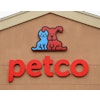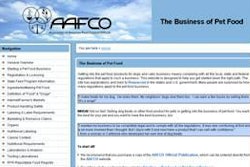
Where do new product ideas come from in the petfood industry? Do they only come from marketing or sales? In my experience, some of the fastest growing new products or brands have come from single entrepreneurs as well as large multifunctional groups. They are led by people with financial backgrounds as well as those who are highly technical and people with diverse backgrounds.
New product concepts are not limited to any one specific group. Ideas come from personal experience, sales meetings, specific pet needs, scientific discovery, focus groups, customer demand, operational observation and entrepreneurial perception.
Innovation is taking an idea and building on it. It requires assessing the product completely and agreeing to a timely, flexible development plan. Once a product idea is conceived and planned, often it becomes a balancing act of activities and reactions:
- The proposed product may totally be out of the realm of production and nutritional reality;
- The desired ingredients and suggested ingredient order may not be in balance with the proposed textures, shapes and shelf life;
- The desire to be all natural may not be in balance with the hope for an extended shelf life;
- Ingredient terms that are market friendly may not be in balance with regulatory approvals;
- A nutritionally great formulation may miss the market targets for taste and consumer appeal.
In addition, packaging goals must be in balance with product strength, shelf life and production capabilities. Product throughput and process need to be in balance with the target cost of goods. These balancing acts are usually under timeline pressures.
Being proactive in the beginning of a project will help reduce problems but will also help keep the project on course as issues arise. Any company seeking to be innovative should have a process in place that allows each business function to have a voice and an opportunity to build the product and ultimately the business. When one group’s perspective becomes the loudest voice, the potential to limit innovation is high. A company with longer development cycles may even try to force concepts through its product development process without wide support and belief in the product. The innovative company takes an idea or concept and adds to it—like adding bricks to a foundation, with each brick supporting the one next to it.
A good plan lays out the specifics in the beginning—such as claims, product attributes, marketing goals and costs—and determines the likelihood of success given the known capabilities: personnel, productions, resources, etc. It is always best to determine the “must-haves” in a project in the beginning versus the “nice-to-haves.”
The plan should also identify decision making, timeframes, communication paths, regulatory reviews, financial goals and—most important—assignments. Spending time in the beginning to determine and communicate expectations will save many lost weeks later on in a project.
A good plan will also expect some things will change or need to change as new information comes forth (see “Example: issues can arise”). What if:
- An in-house production solution does not work?
- Ingredients are not available in sufficient quantities and at good prices?
- Nutritional requirements cannot be met using the ingredients allowed?
- The proposed ingredients lead to physiological or stability issues?
When new pieces of information arise, there must be a timely review and reassessment with give and take by all groups to quickly rebalance the goals of the proposed product.
Experience tells me that advanced planning is not always done. Often one functional group leads the company’s development process. The ability to be flexible or to change as new problems and information arise is sometimes difficult. Potential weaknesses in the project may not have been well evaluated or communicated. Perspectives and experiences differ. If a good plan has not been built in the beginning, what is nice to have may end up being presented as a must-have. Timelines will have no bend. Expectations of one business group may supersede or push the capacity and abilities of another.
Proactive, flexible companies are generally good environments for innovation that encourage a diversity of perspectives with multiple communication and personality styles. Innovative companies allow for disagreement and failure—in fact, they expect it. There is no excuse for not taking the time in the beginning to lay out a good path, no matter how difficult.Â















